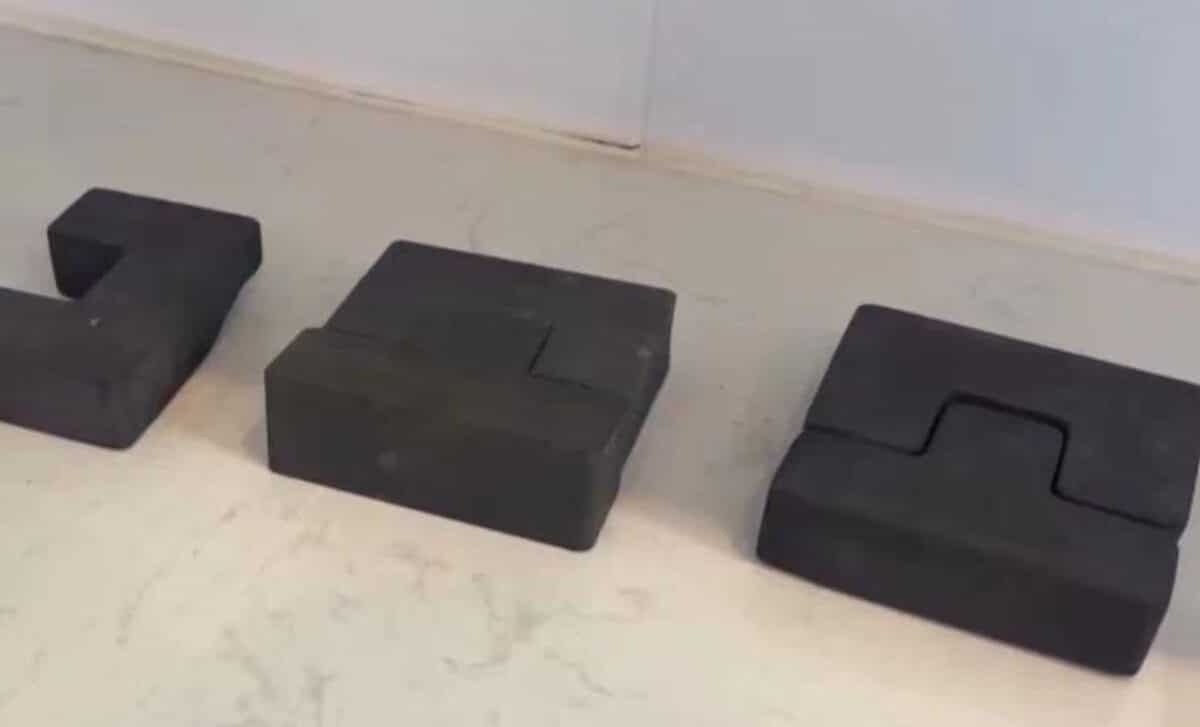Chinese researchers have developed lunar bricks made from simulated lunar soil that are more than three times stronger than conventional building materials. These bricks, designed for future moon base construction, will be sent to China’s space station to test their durability against the harsh lunar environment. If successful, they could be used to construct a lunar base by 2040, minimizing the need to transport building materials from Earth.
Chinese Researchers Develop Ultra-strong ‘Lunar Bricks’ for Future Moon Base Construction

Chinese scientists have made significant strides in developing building materials for the construction of a future lunar base.
Researchers at Huazhong University of Science and Technology (HUST) have created lunar bricks from simulated lunar soil, claiming that these bricks are over three times stronger than traditional construction materials like bricks or concrete. This innovation is part of China’s ambitious plans to establish a long-term human presence on the moon, with the first base expected to be operational by 2040.
Innovative Lunar Bricks Designed for the Moon’s Harsh Environment
The bricks were developed by subjecting simulated lunar soil to a process called sintering, which involves heating the soil to high temperatures to compress it into solid, durable bricks. According to the researchers, these bricks are designed to handle the extreme conditions found on the moon, such as rapid temperature fluctuations between 180 degrees Celsius during the day and minus 190 degrees Celsius at night.
The interlocking mortise and tenon design of the bricks allows them to be easily assembled without adhesives or mortar, making them ideal for lunar construction. By using materials similar to lunar regolith, these bricks could be a game changer in reducing the costs and logistical challenges of transporting building materials from Earth.
Testing Lunar Bricks in Space
Before these bricks can be used to build structures on the moon, they must undergo rigorous testing in space to ensure their durability. China plans to send these bricks to the Tiangong space station aboard the Tianzhou-8 cargo spacecraft. In space, the bricks will be exposed to cosmic radiation, extreme temperature changes, and the vacuum of space, allowing researchers to assess how well they hold up in a space environment.
Once these bricks are thoroughly tested, they could be deployed in China’s upcoming lunar missions, particularly Chang’e-8, which is slated for 2028. The results from the tests conducted on these lunar bricks will be crucial for determining their long-term viability and effectiveness in building future lunar habitats.
Future Lunar Construction and Sustainability
The development of lunar bricks is part of China’s broader lunar exploration program, which aims to create a self-sustaining lunar base by 2040. Central to this goal is in-situ resource utilization (ISRU)—the process of using local resources on the moon, such as lunar soil, to reduce reliance on materials transported from Earth.
Zhou Cheng, a professor at Huazhong University of Science and Technology, emphasized the importance of using lunar resources in construction. “Using local materials to build a station on the moon will allow us to carry less from Earth and provide an alternative to expensive cargo deliveries,” Zhou explained. By producing building materials on-site, China aims to significantly lower the costs associated with lunar construction, making long-term habitation and exploration more feasible.
In addition to cost savings, Zhou highlighted the sustainability benefits of using lunar soil: "The moon’s regolith is abundant and offers the raw materials necessary for construction, which means we won’t have to rely on frequent resupply missions from Earth." This approach is key to China’s vision of a lunar base that can support scientific research and resource extraction, with minimal input from Earth.

Laying the Foundation for Lunar Exploration
China’s Chang’e missions are steadily advancing the country’s lunar exploration capabilities. The Chang’e-7 mission, set to launch in 2026, will conduct environmental and resource surveys at the lunar south pole, while Chang’e-8, launching in 2028, will begin building the first components of a research station. These missions are critical to China’s broader plan of establishing a permanent research base on the moon by 2040.
If these bricks prove successful in space testing, they could become the primary building blocks for this lunar base. The technology behind their development also demonstrates China’s commitment to utilizing advanced manufacturing technologies, such as 3D printing, in space. By combining lunar bricks with innovative construction methods, China could build habitats, laboratories, and infrastructure on the moon with greater efficiency.
A Future of Lunar Exploration and Habitation
The development of lunar bricks represents a significant step forward in lunar construction technology. By leveraging local resources and innovative building techniques, China is positioning itself as a leader in space exploration and lunar infrastructure development. If the bricks prove durable and effective in the harsh lunar environment, they could become the foundation of lunar bases, supporting future long-term missions and scientific exploration.
The upcoming tests in space will provide valuable insights into the bricks’ durability, and their success could pave the way for more ambitious construction projects on the moon in the coming decades. With China's lunar ambitions taking shape, these technological advancements are laying the groundwork for a future where humanity can sustainably explore and inhabit the moon.



